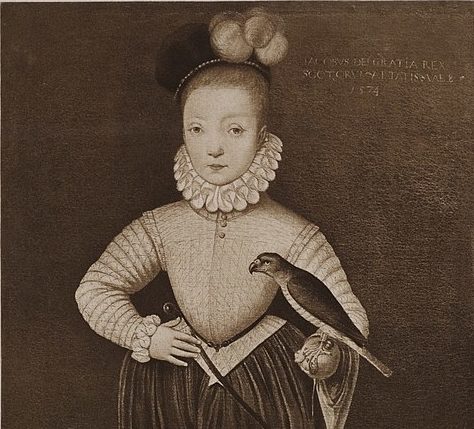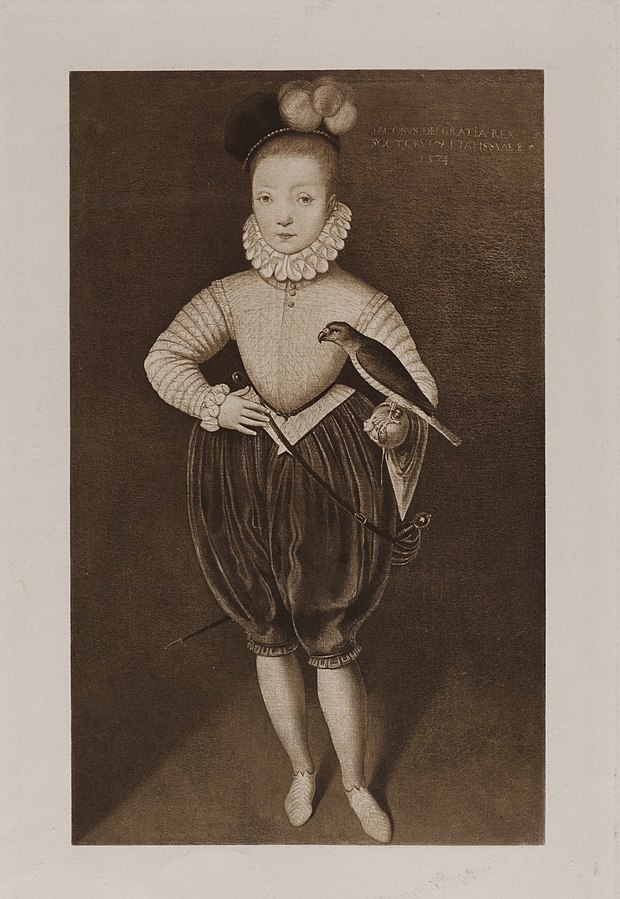This was my contribution to the Historical Writers’ Forum Summer 2020 Blog Hop – the theme was Momentous Events and this was a big one: the birth of the son of Mary, Queen of Scots, would come to unite Scotland and England under a single ruler.
From his first breath, James was the only unquestionably legitimate male heir in the entire Tudor bloodline. And he was descended from Henry VII (twice) through Margaret Tudor, the oldest daughter, which comforted the primogeniture purists even though Henry VIII had removed her line from the succession. So he was immediately the informal heir presumptive because Elizabeth I had consistently declared her determination to remain the Virgin Queen (even though she was only 33 at the time and could still have married and borne a child of her own…indeed, she continued to threaten to do so).
(PS – You’ll notice I used the qualifier “unquestionably legitimate” : Katherine Grey, who descended from Henry VII through his youngest daughter, had married Edward Seymour (the son of executed former Protector Edward Seymour) in 1560 and had given birth to two sons, one in 1561 and the second in 1563. But Katherine and Edward had married clandestinely and in haste, with only one witness and a priest whose name they did not know. Their witness died in 1561 and they couldn’t locate the priest, so in 1563 Archbishop Parker declared their union invalid.)
James was also the philosophical favorite, even though he was a foreign ruler: how could England pass up such a perfect opportunity to unite with Scotland? This was a dream that Henry VIII had fanatically pursued a generation before when HE was the one with a son and Scotland the country with an infant female queen, Mary. But because Henry tried to bully the Scots into this plan (a strategy continued after his death), they turned instead to the Auld Alliance with France and secreted her away so she could marry their dauphin.
Even so, Elizabeth never formally designated James as her successor. Of course, she never formally designated ANY successor – always repeating that she’d known what it meant to be marked like that during her sister Mary’s rule, that she was not about to place herself “in a winding sheet before her time”. She did correspond with James, and they had a warm friendship that survived Elizabeth’s decision to execute his mother (which James was said to have taken Mary’s death “very heavily”, he quickly accepted Elizabeth’s impassioned letter to him and joined her in placing the blame on the English Council).
Regardless, James inherited the English crown on Elizabeth’s death, and became the first King of the new Great Britain. He ruled successfully for 22 years, leaving behind a mixed legacy (his people loved him for bringing peace and low taxes, but anti-Stuart historians writing soon after his death claimed that his absolutist attitudes and financial irresponsibility laid the foundations for the English Civil War). But that’s a story for a different blog…
***
If you like my posts, you’ll love my books! My Seymour Saga trilogy tells the gripping story of the short-lived dynasty that shaped the Tudor Era. Jane the Quene skews romantic, The Path to Somerset is pure Game of Thrones (without the dragons), and The Boy King is a noir coming-of-age. Get them now through Amazon, Barnes & Noble, Kobo, and Apple, or even your local independent bookstore!

(PS Already read them? Did you love them? Then please review them – even just a stars rating! It makes a huge difference in helping new readers find them and would mean the world to me!)


Interesting article on James V1 and 1, but I was looking out for the details of his actual birth. Perhaps the heading tricked me! Yes, James loved his mother so dearly that he had her dead remains removed to West Minister Abbey and placed opposite her ‘beloved’ cousin Elizabeth1. The big question stll aches me: why did Elizabeth went ahead and had Mary executed long after she abdicated the Scottish Throne to make way for her son? She could have pardoned Mary and sent her into exile after all the “assumed plots” to put Mary on the English Throne. We know that Mary had her Catholic backing and French allies, but vehemently denied any involvement in the scheme and swore her innocence to the tragic end.
James did very well for the new “United Kingdom”. Among his achievements: he gave the world a ‘New’ Bible. One of his failings: he could have shown more tolerance towards the Catholics; after all they were his mother’s brothers and sisters in Christ and he was actually born a Catholic in a Catholic kingdom. Then the “Gun Powder Plot” would have never been conceived.
I think that you are right that Elizabeth should have sent her on her merry way back to Scotland…but once the Babington Plot came around (and showed that Mary was indeed casting around for international support), Elizabeth really didn’t have a choice (my take, anyway). And sorry if you felt misled by the title of the article!